10 Tracks That Have Changed A Hell Of A Lot Since F1’s First Visit
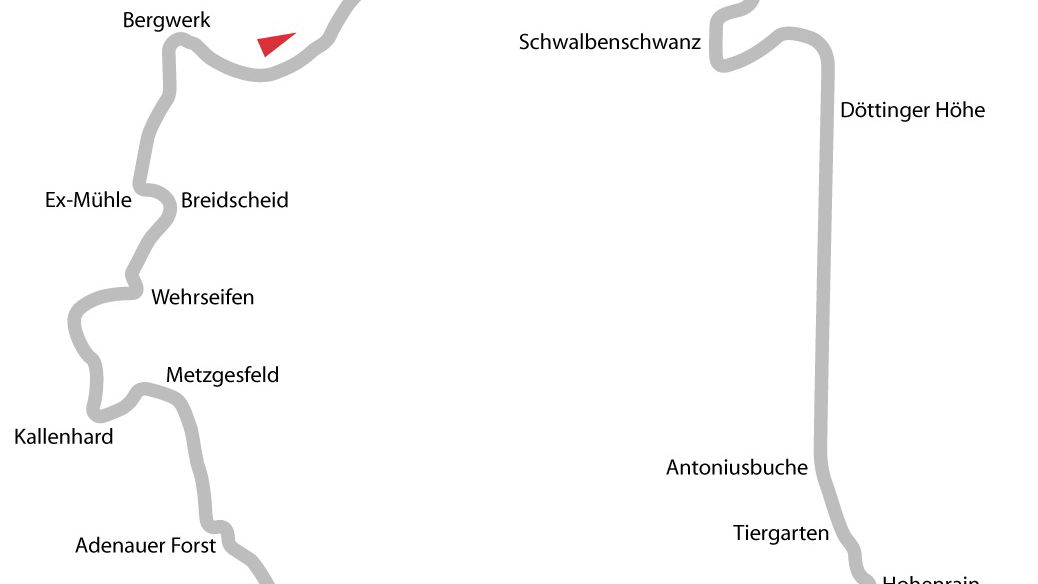
1. Nurburgring
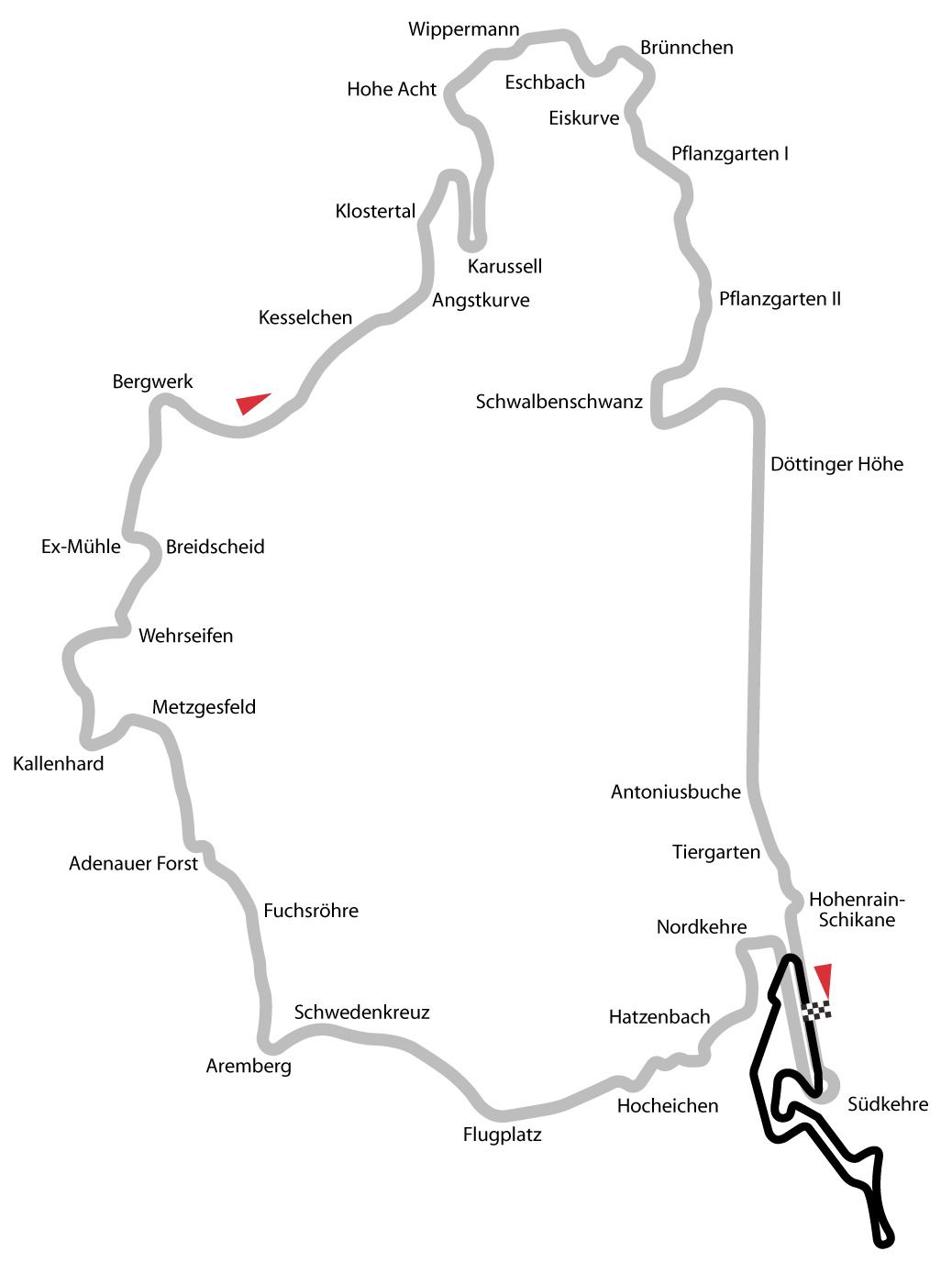
Of course, the iconic Nurburgring Nordschleife still exists and is raced on by both professionals and amateurs. But the Nurburgring F1 raced on in 1951 is completely different to the Nurburgring the series visited in 2013.
The Nordschleife was raced on by F1 for the last time in 1976 before it was deemed too dangerous, with the Hockenheimring then hosting the German GP. A new, short and safer Nurburgring was completed in 1984 and has hosted the European GP and German GP sporadically over the years.
The new track is located right next to part of the old Nurburgring. It has all of the characteristics of modern tracks, but with a few old-school touches. It lacks the charm, history, character and challenge of the Nordschleife but it still throws up some good on-track action.
2. Silverstone
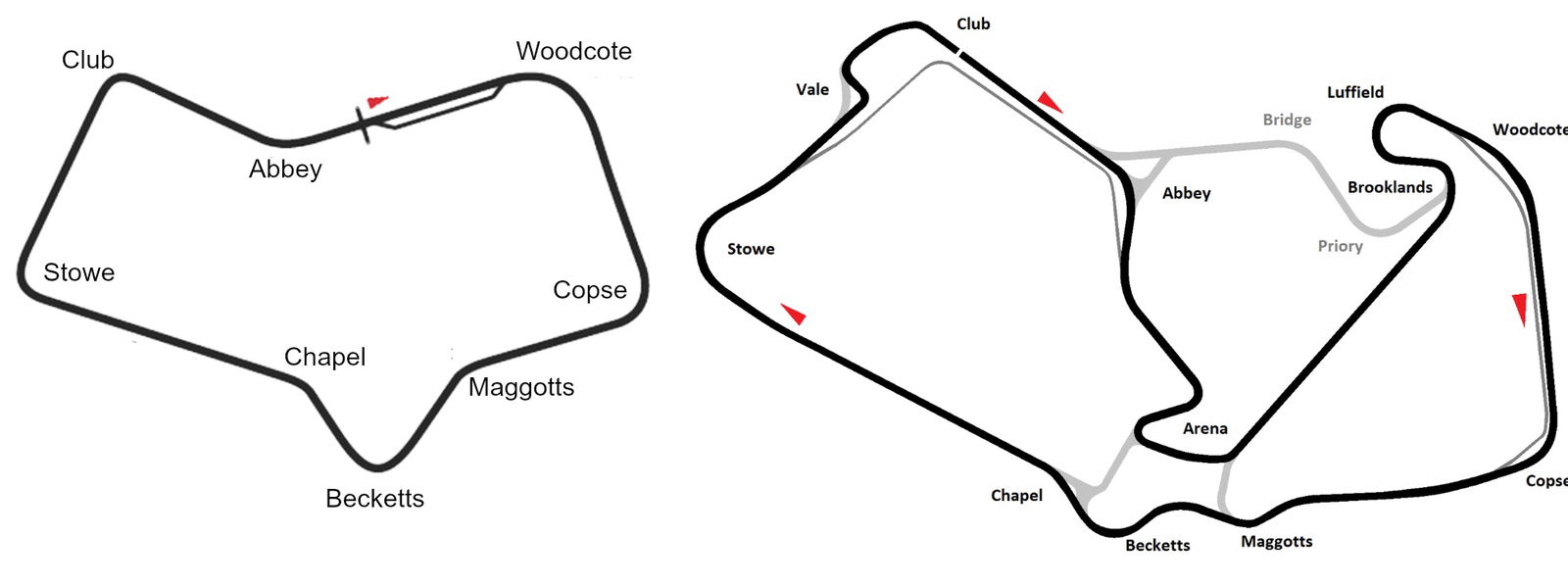
The Silverstone circuit in the UK had the pleasure of hosting the first ever F1 world championship round in 1950. It used the perimeter roads of the RAF Silverstone airfield and was a fast layout that followed F1’s rapid evolution.
Several chicanes were added over the years but the big redesign took place after the 1990 British GP, switching high-speed corners for slower and more technical sections. Parts of the famous track remained but there were considerable changes elsewhere. Further re-profiling took place after the tragic deaths of Roland Ratzenberger and Ayrton Senna in 1994.
The new ‘Arena’ section debuted in 2010 and added more slow corners to the layout, while the start/finish line and grid was moved to the Silverstone ‘Wing’ in 2011. Parts of the track keep their character but others are completely unrecognisable.
3. Hockenheimring
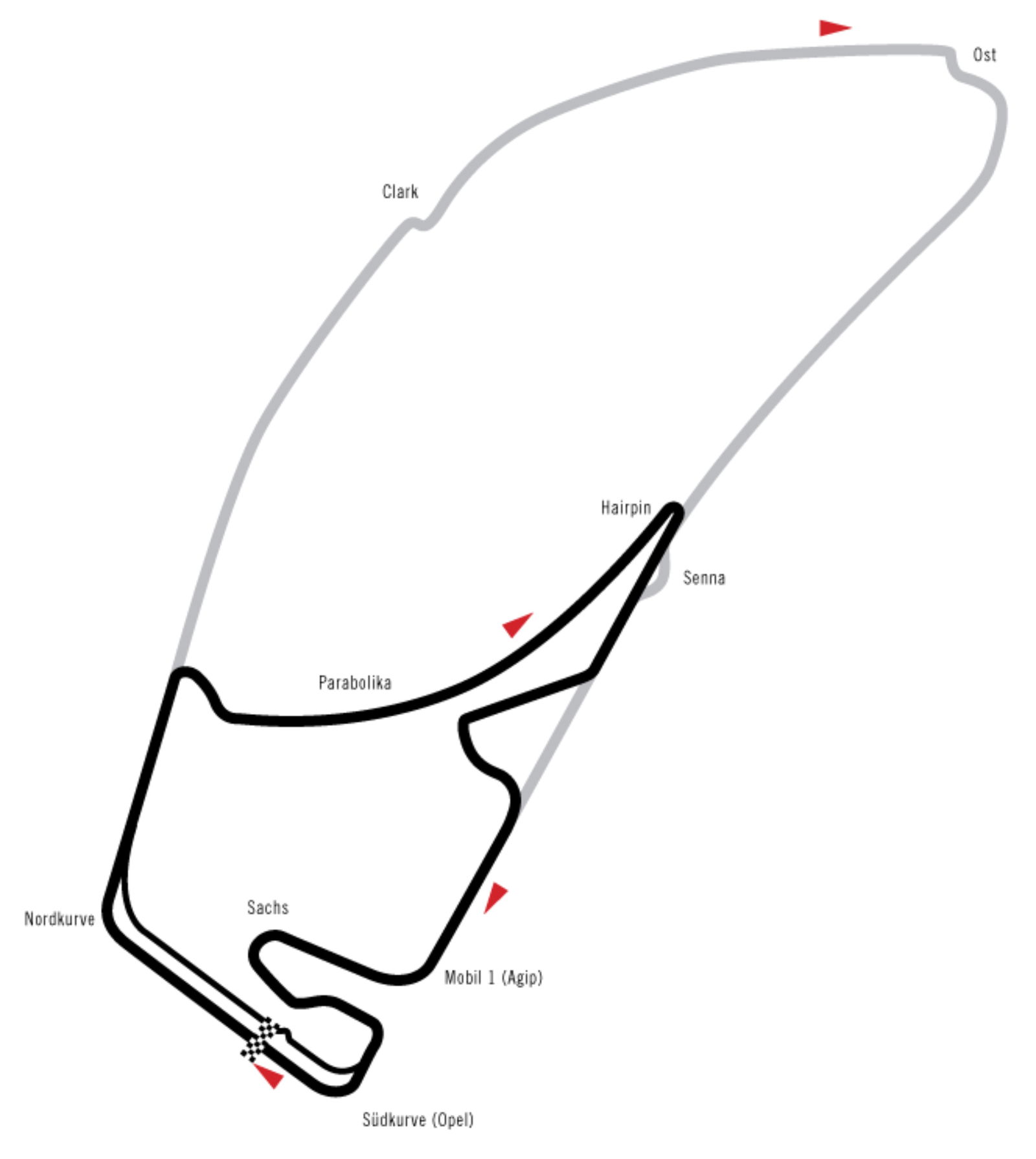
The Hockenheimring debuted in F1 in 1970 and then became a more permanent host of the German GP, before recently alternating with the Nurburgring. The original, 4.24-mile track was a fast run through the woods, with long straights separated by tight chicanes and a twisty stadium section completing the lap.
The circuit usually produced good racing and had high attrition rates due to the stress put on the engines. But for safety reasons and to improve the show, F1 officials urged the Hockenheim track to be redesigned. For the 2002 event a new, slower and more straightforward track debuted and has remained largely the same ever since.
It swapped the charisma, old-school vibe and pure speed of the old layout for a more technical, complicated and twisty track, that features many of the characteristics we see at typical modern circuits.
4. Imola
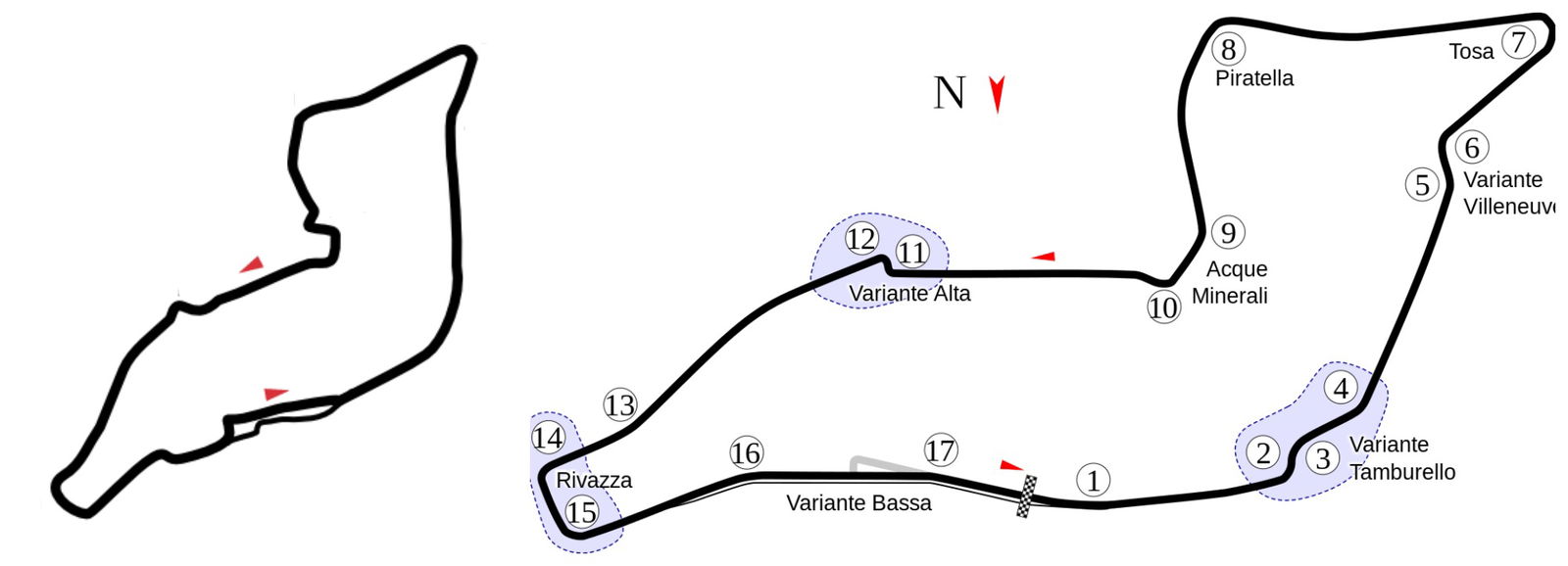
So, this track hasn’t been raced on in F1 since 2006 but it has recently returned to the headlines with the uncertainty surrounding the future of the Italian GP. The circuit was originally much faster when F1 first visited it in 1980 and had some seriously high-speed sections.
But after several big crashes, including the ones that sadly took the lives of Ratzenberger and Senna, Imola went through some major reprofiling. Several chicanes were added, making it a much slower circuit and boosting safety. In recent years, despite F1 not racing there, it has gone through several other major changes, including a whole new pit complex.
5. Interlagos
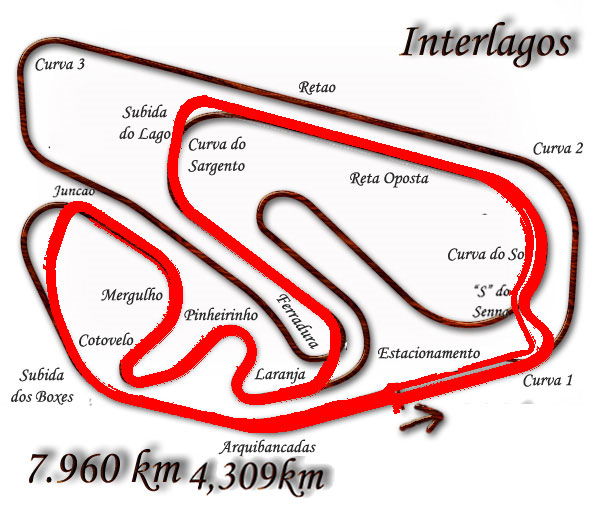
The Brazilian Grand Prix venue has gone through quite a transformation, which continues this year with a new pit/paddock complex. Previously it featured more long straights and tight hairpins but the bumpy surface and poor safety standards meant F1 left the Interlagos track in 1980.
Major changes were made to the layout and the undulating track was made shorter and slightly slower, with a more twisty infield section and a new chicane at the start of the lap. It returned to F1 in 1990 and Interlagos has remained largely unchanged ever since, which is good for us because it always throws up drama and exciting racing!
6. Red Bull Ring
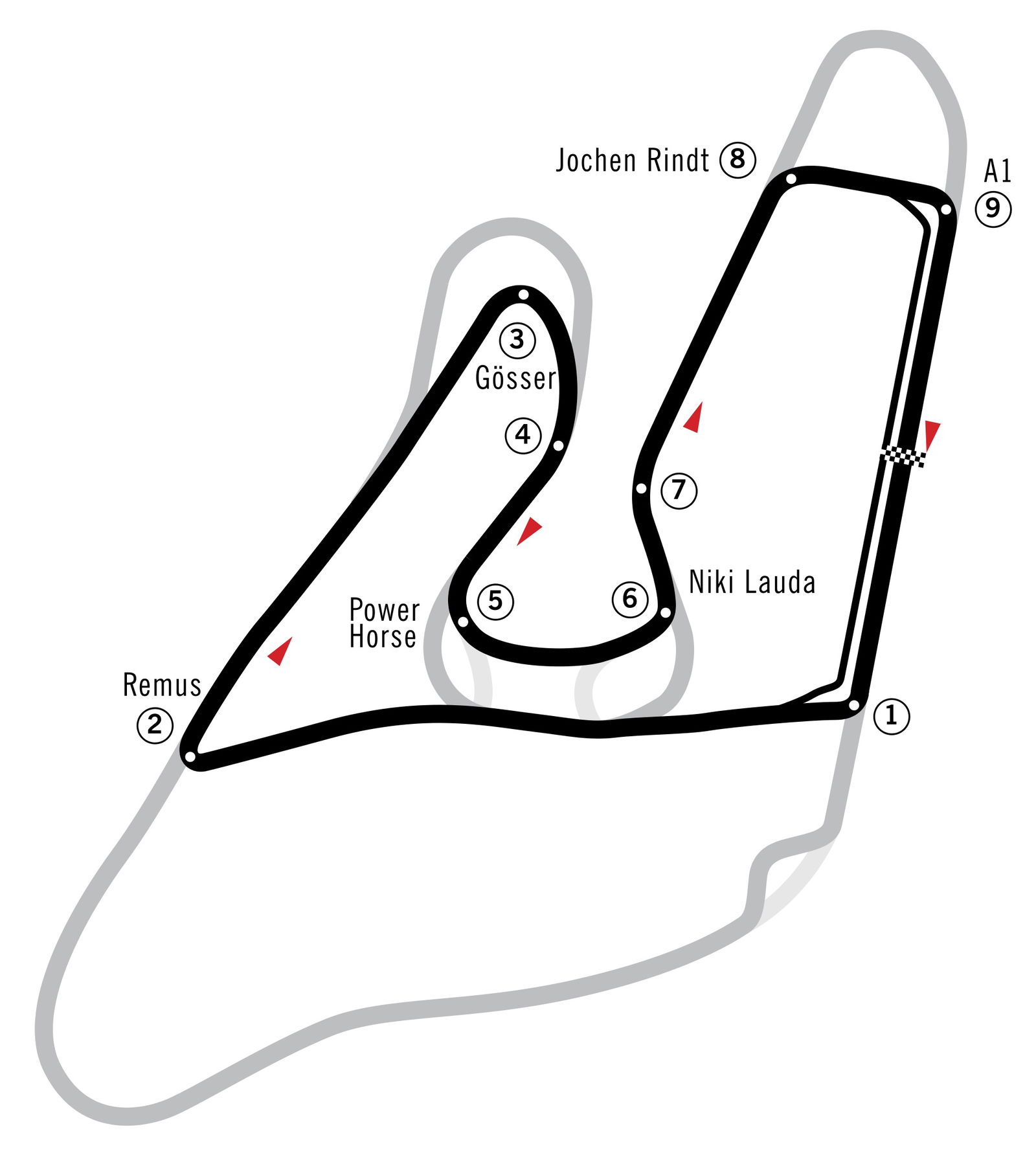
The Red Bull Ring has gone through various different names and layouts since it debuted in F1 back in 1970. Originally named the Osterreichring, it was a fast track with several long straights, big undulation changes and a few sweeping corners in the middle of the lap.
A chicane was added for 1977 before Austria dropped off the calendar in 1987, returning at the revamped A1 Ring, which drastically redesigned the layout, making it shorter, slower and much more twisty. The last race there was in 2003 before Red Bull purchased the track, gave it a major refresh and brought F1 back for 2014.
7. Spa-Francorchamps
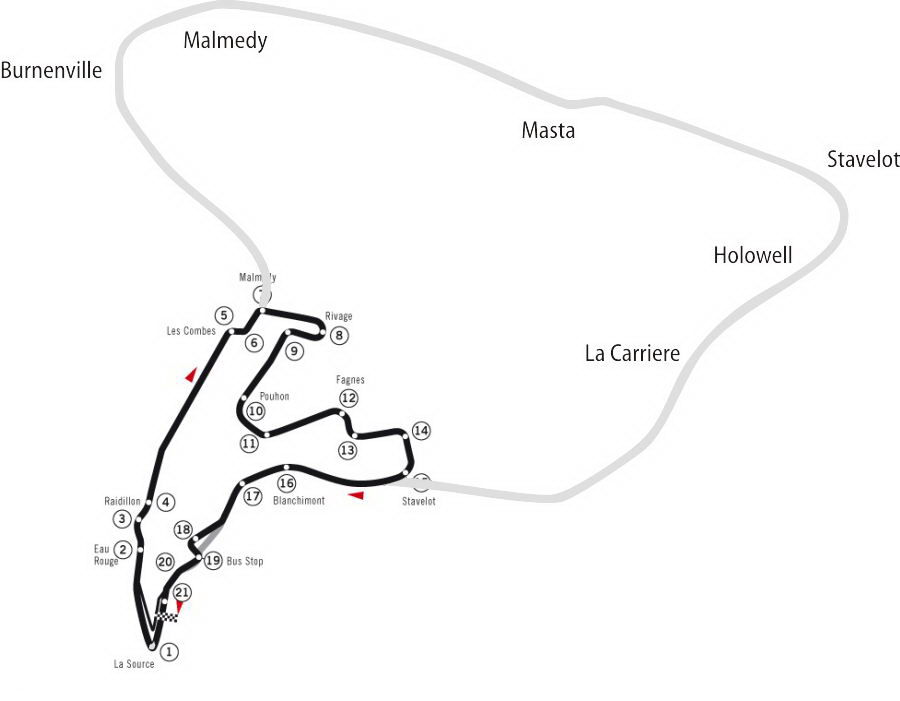
Everyone’s favourite classic F1 track looked very, very different when the pinnacle of single seater racing first visited Spa-Francorchamps in 1950. It was a monstrous, dangerous 8.761-mile track with cars reaching insane speeds as they passed houses, farms and trees on what were usually public roads.
Safety fears meant the race was cancelled in 1971 and didn’t return until 1983, on the new track which we have all come to know and love over the years. Still a challenging layout, the shorter Spa retained the likes of La Source, Eau Rouge and Blanchimont but added a technical middle section with now-classic corners like Pouhon, Stavelot and Les Combes.
Since then the circuit layout has remained largely untouched, bar the normal safety changes, run-off area tweaks and barrier upgrades. The pit complex was revamped in 2007 and the final chicane was changed, with La Source also being moved back.
8. Monza
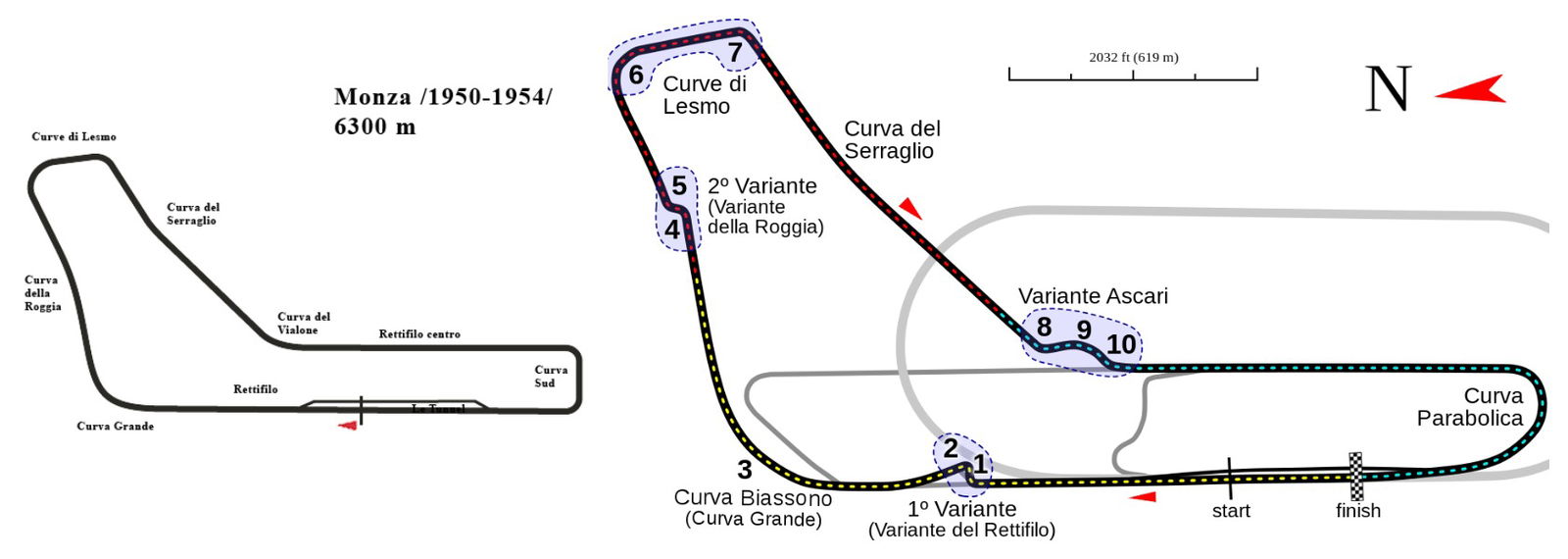
The shape of Monza’s F1 track has remained pretty similar but it’s been the addition of chicanes that has really altered the challenge of the Italian GP venue. Back in 1950 Monza was a ferociously fast, flat-out section with only a handful of actual corners.
Briefly the track and the nearby banked oval were combined, creating a bonkers layout. Unsurprisingly it didn’t last long and the original circuit went through a number of evolutions in the space of several decades, with the “squeezing” of some corners, reprofiling of Parabolica, the addition of the Ascari chicane and the introduction of two chicanes in the first sector.
The current layout as we know it, with the right-left Variante Rettifilo chicane, was first used in 2000. Obvious safety changes have been made but not much else has been modified since then.
9. Autodromo Hermanos Rodriguez
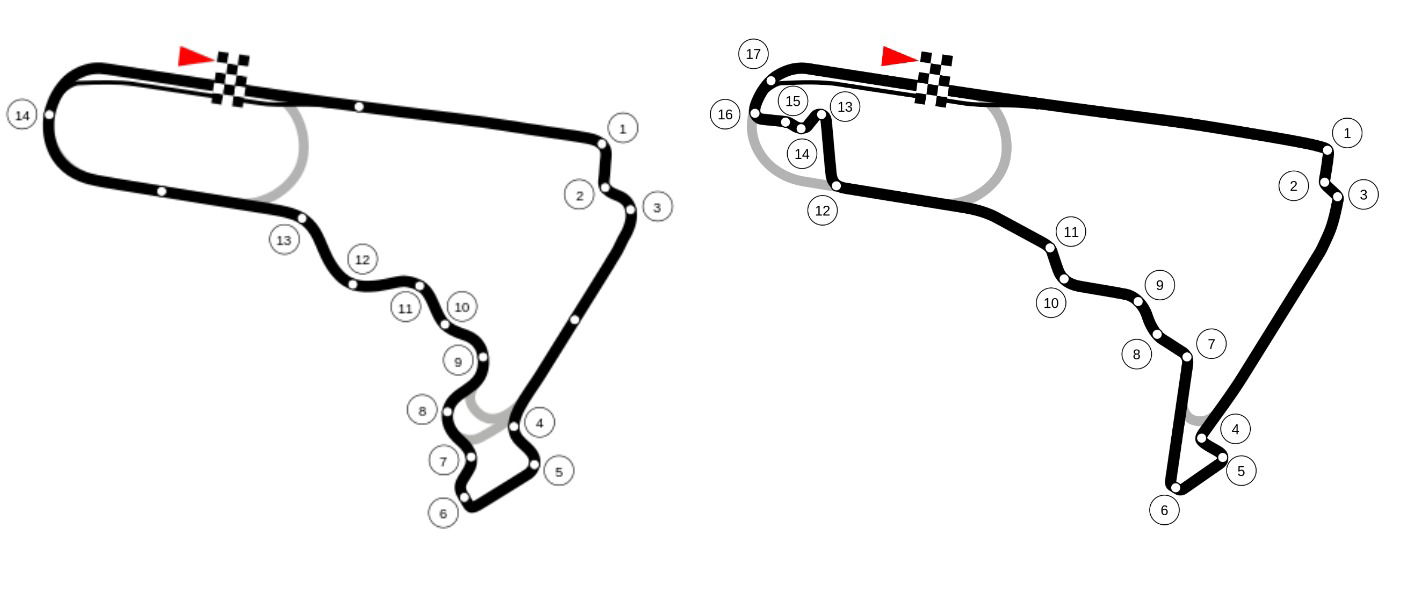
The Mexican Grand Prix returned to F1 last season on the newly revamped Autodromo Hermanos Rodriguez, which still kept the charm and flowing nature of the original layout but with a modern twist.
The first race at the track took place in 1986, with some seriously quick, flowing sections and a long, final corner – the famous Peraltada (which is part of the oval circuit). It dropped off the calendar in 1992 but was revived for 2015, with many of the turns being reprofiled and tweaked for its return by Hermann Tilke.
The biggest difference came in the final sector. Only part of the Peraltada was used, with cars instead diving into a stadium section (incorporating an actual baseball stadium) with several tight corners before rejoining the original track for the fast right-hander that leads onto the main straight.
10. Jacarepagua
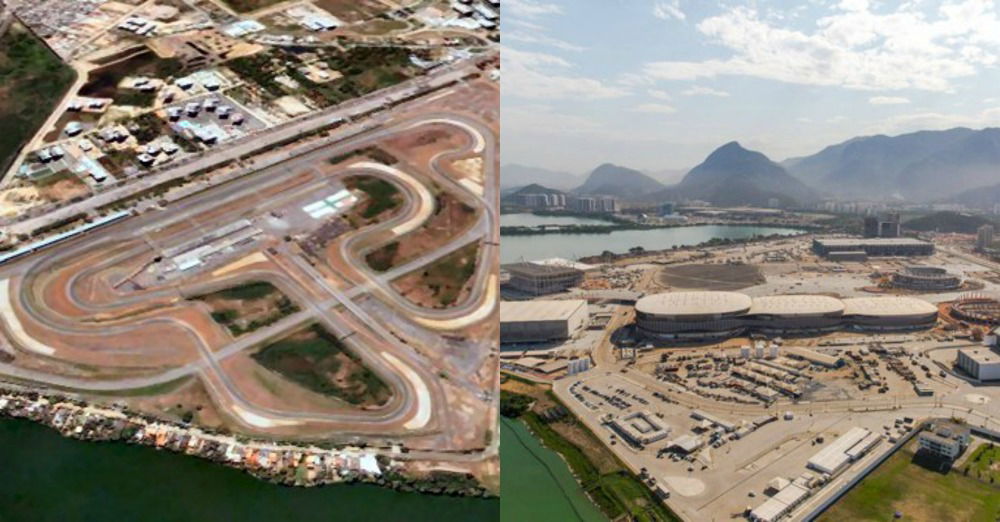
Okay, so this one’s a bit different. F1 hasn’t raced to Rio de Janeiro since 1989 but it looks completely different to how it did when the series’ first visit to it in 1978. That’s largely because it doesn’t actually exist anymore. It was demolished in 2012 to make way for 2016 Olympic Games facilities.
Comments
They have been dumbed down. Tills is the worst thing to happen to F1 in the last 50 years.
The same that happened to Jacarepagua, Happened In My Town for A stupid Games, and they Demolished a Race track that was used for Karting, And all to build a Fields for thos Silly Games, and still they won’t build another one
I thought Spa had a chicane part in the 1980’s?
Soo.. both Ratzberger and Senna lost their lives on both Silverstone and Imola?
May I suggest Zandvoort? Since F1 left it has changed a lot
Is there any semi-modern game where you can race some of these older versions? I remember some of the old layouts from Genesis games, but that was a long time ago.
Spa was so awesome before!
La Joya CD Juarez, Chih, Mexico.
Now its own by the goverment and its closed
F3 raced here in 1991
The old tracks looked quick with a lot of room for over takes…you know F1 wasn’t having all that “passing cars” jazz.
Wtf how is the nürburgring too dangerous? Can a circuit be too dangerous or is it the drivers who where too daring
Pagination